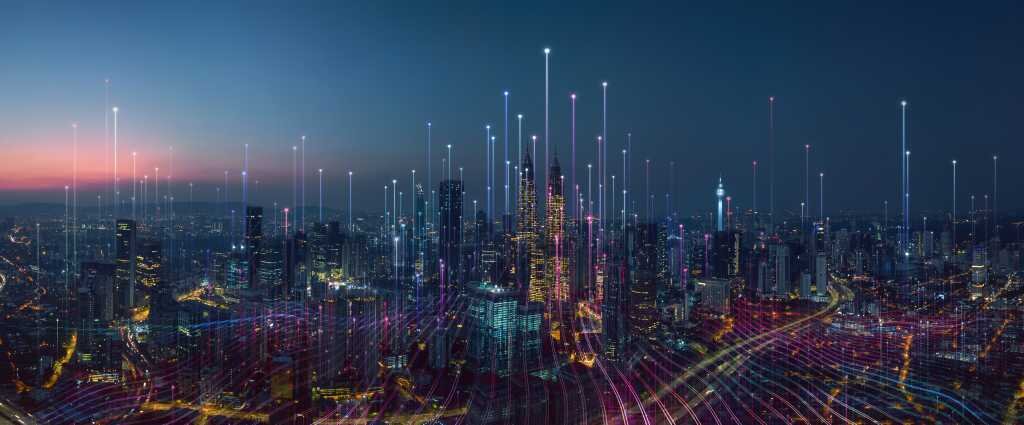Envision a city where technology seamlessly integrates with daily life, optimizing everything from traffic flow to energy usage, creating an urban ecosystem unlike any we’ve seen before. This is the promise of smart cities. These forward-thinking locales aim to operate public services at peak efficiency, ensuring that residents have easy access to accurate information, vital resources, and significant community engagements. Imagine moving effortlessly through a city with optimized public transportation, connected vehicles, and intelligent adaptive traffic management, all working harmoniously. Behind the scenes, data enhanced by artificial intelligence (AI) provides insights to increase energy efficiency and promote sustainable urban development, all while robust security measures ensure the privacy and safety of personal information. Fueled by continuous technological advancements, smart cities undergo rapid adaptive transformations, always staying ahead of the curve by embracing new innovations.
However, achieving this vision is not without its challenges. Cities pursuing this goal must often contend with the daunting task of maintaining existing critical infrastructure. From outdated technology to physical wear and tear, municipalities face numerous obstacles in ensuring that essential services run smoothly as they plan and implement their smart city strategies.
A critical aspect of this journey involves addressing vulnerabilities in Internet of Things (IoT) sensors and devices to combat cyber threats. Additionally, safeguarding the privacy and security of data is imperative in an increasingly connected environment. Communication networks need to be resilient to withstand external disruptions, and infrastructure must be flexible enough to scale and keep pace with rapid technological advancements, including the latest developments in AI and generative AI (GenAI). As city officials drive forward with smart city plans, these challenges must be addressed head-on to realize a sustainable and promising future.
Modernizing Critical Technology for Smart Cities
To tackle these issues effectively, modernizing critical infrastructure components is essential. This not only enhances data security and accuracy but also optimizes the management of city operations, enabling municipalities to provide the services communities need to thrive.
While committing to modernizing IT and operational technology (OT) infrastructure is a crucial initial step in developing smart cities, it must form part of a broader, forward-thinking strategy. Investments in infrastructure should be designed to meet current needs while also being adaptable, scalable, and resilient enough to handle future challenges. Achieving this requires comprehensive planning, strategic partnerships, and ongoing innovation to create infrastructure that leverages cutting-edge technologies. It should integrate smoothly with existing systems and support the evolving needs of citizens, businesses, and the environment.
Building a Connected Framework with Edge Platforms
The subsequent phase involves establishing a secure, interconnected framework of edge platforms to act as a comprehensive, centralized nervous system for the city. This system would serve as a unifying structure for securely integrating new devices and decoupling sensors, cameras, and other IoT components from applications throughout their deployment and lifecycle management. By adopting this model, cities can efficiently onboard new technologies while maintaining the flexibility to adapt to future advancements and innovations. Ultimately, this interconnected framework allows smart cities to fully harness their infrastructure investments, paving the way for a more connected and sustainable future.
Implementing such a secure, interconnected smart city framework can lead to transformative outcomes in city services. For instance, city planning can be revolutionized through AI-driven urban digital twin models, predictive modeling, and simulations, enabling city officials to make informed decisions, anticipate challenges, and proactively shape future developments. Critical infrastructure projects in civil engineering, including water, energy, bridges, roads, waste management, and fiber trenching, can benefit from streamlined execution plans and improved collaboration for quicker, more efficient completion.
Furthermore, carbon neutrality goals can be met by monitoring consumption patterns, establishing environmental, social, and governance (ESG) baselines, fostering sustainable building practices, and creating a greener, more environmentally friendly future. AI-driven intelligent traffic management can optimize patterns and flows, reducing drive times, pollution, and greenhouse gas emissions while enhancing emergency response capabilities.
Strategic Planning and Collaborative Efforts
Upon assessing desired outcomes and priorities outlined by city leadership in their strategic plans, the focus should shift to identifying which departments, systems, and subsystems are most likely to benefit from improvements and where digital transformation can drive success. These details will define the starting point for formulating an action plan based on available budgets and priorities.
Partnering with technology leaders like Dell Technologies can help city officials develop a prioritized plan with clear direction and a phased approach, allowing cities to overcome common challenges such as increased community demands, minimal resources, and limited budgets. This collaboration offers a pathway to demonstrate improvements that can securely scale with ease.
As smart cities evolve and embrace AI, GenAI, and other innovative technologies, solutions like Dell NativeEdge provide a unified platform for managing the complex web of interconnected technologies that underpin smart city operations. Dell NativeEdge offers a single-pane-of-glass experience, enabling city administrators to efficiently orchestrate various systems, keeping smart infrastructures manageable, secure, and ready for future expansion. With Dell NativeEdge at its core, smart cities can transform urban spaces into more livable, sustainable environments, enhancing the quality of life for all citizens.
For more information, visit Dell.com/DigitalCities.


